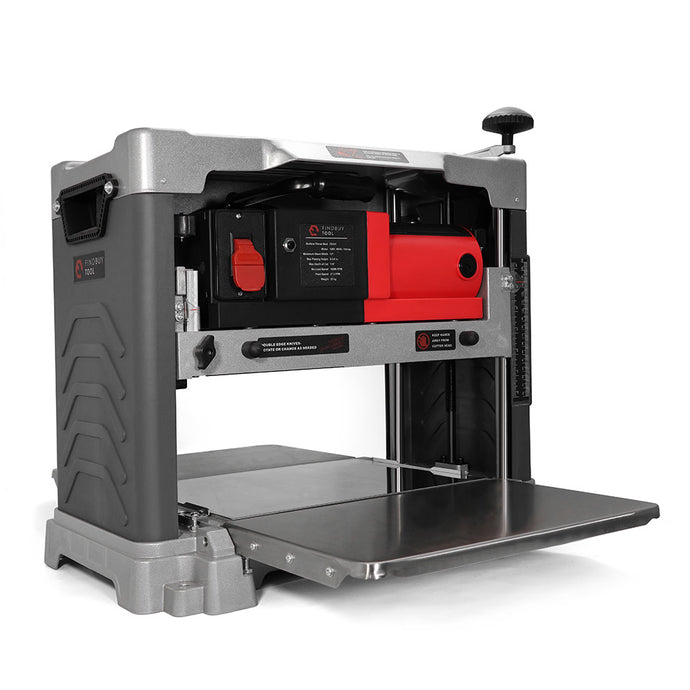Elevating Woodworking Precision: Using a Planer as a Jointer
In the world of woodworking, precision and efficiency are the hallmarks of a skilled craftsman. While jointers and planers are traditionally viewed as distinct tools with their own specific functions, there's an intriguing overlap in their capabilities that can enhance your woodworking projects. One of the more innovative techniques involves using a planer as a jointer - a creative workaround that can streamline your workflow and yield impressive results.
Traditionally, a jointer is used to create a flat surface on a piece of wood. This is crucial for ensuring that the edges or faces of the wood are perfectly straight and square before you proceed with further processing. A planer, on the other hand, is typically employed to reduce the thickness of the wood to a uniform dimension. While these two tools have distinct roles, their functions can intersect in surprising ways, especially if you're looking to maximize the utility of your equipment or if a jointer is not readily available.
The core of this technique lies in understanding how both tools operate and how their functions can complement each other. A jointer flattens one face of the wood, creating a reference surface that is perpendicular to the edge. This flat surface is crucial for ensuring that subsequent cuts and joinery are accurate. A planer, on the other hand, takes a board and removes material from both faces to achieve a uniform thickness. By leveraging the planer as a jointer, you can effectively flatten one face of the wood, allowing you to use it for precise work.
To use a planer as a jointer, you need to carefully manipulate the process to achieve a flat surface. The first step is to prepare the wood for the operation. Select a board that is relatively straight and has minimal warping or twisting. Any significant irregularities should be addressed beforehand, as they will affect the outcome of your work. Next, secure the board firmly on the planer. It is crucial to ensure that the board is held flat and steady during the planing process to prevent any movement that could lead to uneven surfaces.
The key to using a planer as a jointer is to make use of the planer's capabilities to achieve a flat surface on one side of the board. Begin by setting the planer to remove a minimal amount of material - this helps to maintain control over the process and reduces the risk of introducing new imperfections. As you pass the board through the planer, keep a keen eye on the progress. The goal is to achieve a smooth, flat surface without creating dips or ridges.
One of the most effective ways to ensure that the planer produces a flat surface is to use a technique known as "winding sticks" or a "straightedge." This involves placing two straight sticks or bars on the wood's surface and checking for any light gaps between them. By comparing the flatness of the board with the straightedge or winding sticks, you can gauge how well your planing is progressing and make adjustments as needed.
While the planer can be used to flatten one side of the board, it is essential to remember that this technique is not a complete substitute for a jointer. The primary limitation is that planers do not address issues of edge squareness. To achieve perfectly square edges, additional steps such as using a table saw or a dedicated edge-jointing tool may be required. However, using a planer as a jointer can be a practical and effective method for smaller projects or when working with limited resources.
This approach can also be advantageous in situations where space and budget constraints limit your access to a full range of woodworking tools. By creatively adapting your planer to function as a jointer, you can achieve satisfactory results without the need for additional equipment. This versatility is particularly valuable for hobbyists and small-shop operators who seek to optimize their workflows and get the most out of their tools.
Furthermore, this technique can be a valuable skill to master in situations where precision is critical, but time and resources are limited. By incorporating the planer into your joinery process, you can enhance your ability to produce high-quality woodworking projects efficiently. It also offers an opportunity to develop a deeper understanding of your tools and their potential applications, ultimately expanding your skill set and improving your craftsmanship.
In summary, using a planer as a jointer is a practical and inventive approach that can streamline your woodworking process and make effective use of your available tools. While this technique may not replace the need for a dedicated jointer in all cases, it provides a valuable alternative for achieving flat surfaces and maintaining precision. By understanding the interplay between these two tools and employing creative solutions, you can elevate your woodworking skills and achieve outstanding results in your projects. Whether you're a seasoned craftsman or a woodworking enthusiast, exploring this technique can enhance your versatility and efficiency in the workshop.
